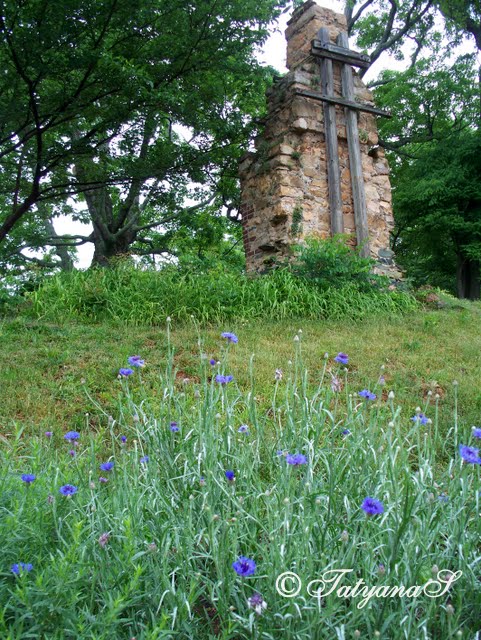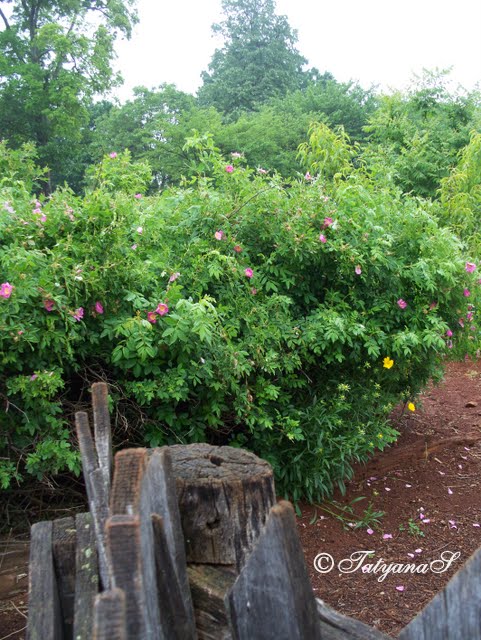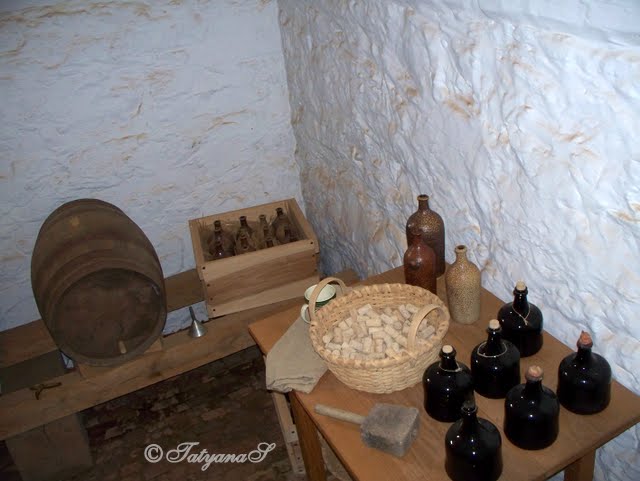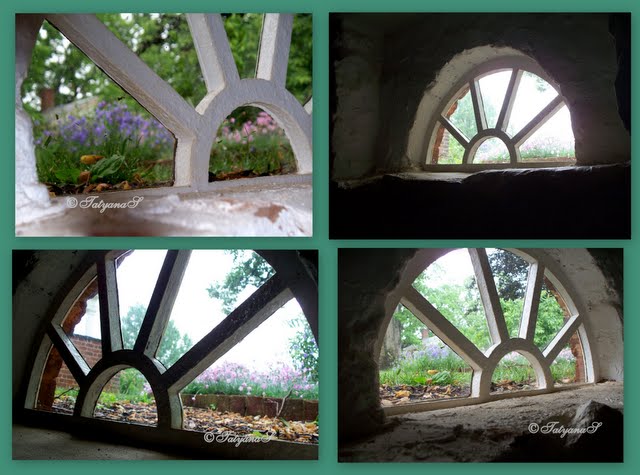The recreation of the Monticello vegetable garden began in 1979 and included two years of archaeological excavation that attempted to confirm details of the documentary evidence.
Thomas Jefferson's vegetable garden resembled a terraced space 80 feet wide and 1,000 feet long, cut into the hillside and supported by a massive stone wall.
*
Thomas Jefferson's vegetable garden resembled a terraced space 80 feet wide and 1,000 feet long, cut into the hillside and supported by a massive stone wall.
*
*
The 2-acre garden included 24 growing plots or "squares". They were organized according to which part of the plant was harvested - roots (beets, carrots), leaves (lettuce, cabbage) or fruits (beans, tomatoes).
*
*
*
"While Jefferson cultivated common crops like cucumbers, cabbages, and beans (both "snaps"for fresh use and varieties that were dried), he also prized his sea kale (Cramber maritima), a perennial cabbage-like species whose spring spouts were blanched with pots, then cut and prepared like asparagus."
*
*
*
"Salads were an important part of Jefferson's diet. He would note the planting of lettuce and radishes every two weeks through the growing season, grow interesting greens like orach, corn salad, endive, and nasturtiums, and plant sesame in order to manufacture a suitable salad oil. While the English pea is considered his favorite vegetable, he also cherished figs, asparagus, artichokes, and such "new" vegetables as tomatoes, eggplant, broccoli, and cauliflower."
I never heard about orach. Did you? Orach (other names: mountain spinach, French spinach, sea purslane) is an annual plant grown for its leaves, which are used like spinach.
*
*
*
The garden was not only a source for the family table, but also a laboratory where Jefferson planted about 330 varieties of more than 70 species of vegetables.
*
*
*
Nowdays, the garden serves as a preservation seed bank of Jefferson-era and 19th-century vegetable varieties.
*
"I have lived temperately, eating little animal food, and that... as a condiment for the vegetables, which constitute my principal diet"- Jefferson to Vine Utley, 1819
*
*
Pavilion, used by Jefferson as a retreat, was reconstructed in 1984
*
Joinery* Chimney. This was one of Virginia's best-equipped woodworking shops. Here, skilled white and enslaved joiners created some of the finest architectural woodwork in Virginia. The joiners also made furniture for Monticello.
*Another new word for me: Joinery - a factory producing wooden products such as tables, doors, and cabinets; cabinetmaking.
*
*
Below the vegetable garden wall, was a 6-acre orchard. It included a nursery where Jefferson propagated special plants.
*
*
*
A lot of vegetables grown in the kitchen garden ended in this kitchen:
*
With its French copper cookware and a multiple-burner charcoal-fired stew stove, the kitchen was among the best equipped in Virginia.
*
I have a strong desire to return to Monticello and spend probably the whole day there learning more about a person who wrote:
"...all my wishes end, where I hope my days will end, at Monticello" Thomas Jefferson, 1787
*
Credits: T. Jefferson. Monticello. A Guide for Visitors; The Gardens of Thomas Jefferson's Monticello by Peter J. Hatch. Peter J. Hatch is a Director of Gardens and Grounds since 1977.
My previous Colonial Gardens posts are here: Part 1 - Jamestown , Part 2 - Yorktown, Colonial Gardens. Part 3 - Williamsburg, Colonial Gardens. Part 4.1 Monticello .
"...all my wishes end, where I hope my days will end, at Monticello" Thomas Jefferson, 1787
*
Credits: T. Jefferson. Monticello. A Guide for Visitors; The Gardens of Thomas Jefferson's Monticello by Peter J. Hatch. Peter J. Hatch is a Director of Gardens and Grounds since 1977.
My previous Colonial Gardens posts are here: Part 1 - Jamestown , Part 2 - Yorktown, Colonial Gardens. Part 3 - Williamsburg, Colonial Gardens. Part 4.1 Monticello .























That is definitely something to aspire to. Beautiful pictures and very well written, by the way.
ReplyDeleteTatyana,
ReplyDeleteI loved looking at your pictures of The Gardens. I hope I can make it up that way to visit again...I was there once as a student. I love that Jefferson's favorite vegetable was English peas. It is mine too. Ahh to have 1000 feet x 80 feet of weedfree healthy vegetables. Hmmm... don't think I am capable of that nor do I have free labor available...willing to work for food. Ha.
Can you even imagine having a garden this beautiful? Thank you so much for sharing it with us.
ReplyDeleteLovely, wonderful photos of this historic place and the pastoral scenes were marvelous. Now? I am hungry for some fresh veggies. ha
ReplyDeleteWhat a wonderful garden! It's so big.
ReplyDeleteA lovely post Tatyana, I never knew Jefferson was such an avid connoisseur of vegetables. How can you not respect someone whose favorite vegetable is the English pea? The garden though rather puts ours to shame, but it's beautiful, and I love the kitchen too!
ReplyDeleteThe most beautiful vegetable gardens I've ever seen.
ReplyDeleteBeautiful garden! Your pictures are so lovely and made me wanting to live there for a while :) That picture with gardens extending to the foggy hills is so gorgeous and peaceful!
ReplyDeleteI have always loved Thomas Jefferson and love learning more about him. Thanks for taking us along. Now I'm gonna check out the posts I missed about the Colonial Gardens.
ReplyDeleteThank you, these trips of yours are so interesting.
ReplyDeleteIf you haven't seen it:
Thomas Jefferson's Favorite Vegetables
http://www.twinleaf.org/articles/vegetables.html
Now that is just not right Tatyana. Where are the weeds in that garden LOL! It looks so wonderful with all those fresh veggies. I am so enjoying your tour with all of its old antiques and way of living.
ReplyDeleteTatyana, wonderful post, photos and history. Seeing the Pavilion in these photos brought back good memories of being there. When I lived near Washington years ago, this is one of the places we would take visitors. Thank you.
ReplyDeleteTatyana,
ReplyDeleteGreat posting enjoyed all fo it! Seems this big garden had a lot of folks to feed a big family, guests and of course the slaves on the plantation.
What lovely photos. Living out west I never get to enjoy such old buildings and deep history. Thanks for sharing. These were marvelous!
ReplyDeletePretty amazing gentleman, wasn't he Tatyana? I love your photos and details. BTW, Orach seed is available at Nichols Garden nursery [dot com] I just bought some today. How coincidental is that?
ReplyDeleteI look forward to your next installment.
It's all the structures that really make it for me.
ReplyDeleteGreat tour.
Wonderful plant location.
ReplyDeleteIs seen as a skilled hand specialist.
Not only beautiful but very informational! Lovely post, Tatyana!
ReplyDeleteAn amazing garden! I envy you getting to see Monticello, Tatyana; it's one of many places I would love to visit.
ReplyDeleteWhat a wonderful place. I am glad you showed us how beautiful of a place he had. It's so great that they have restored it right down to the vegetables so they too can be preserved.
ReplyDeleteOutstanding post! Truly makes you want to be there…on my to do list ASAP. Thank you.
ReplyDelete